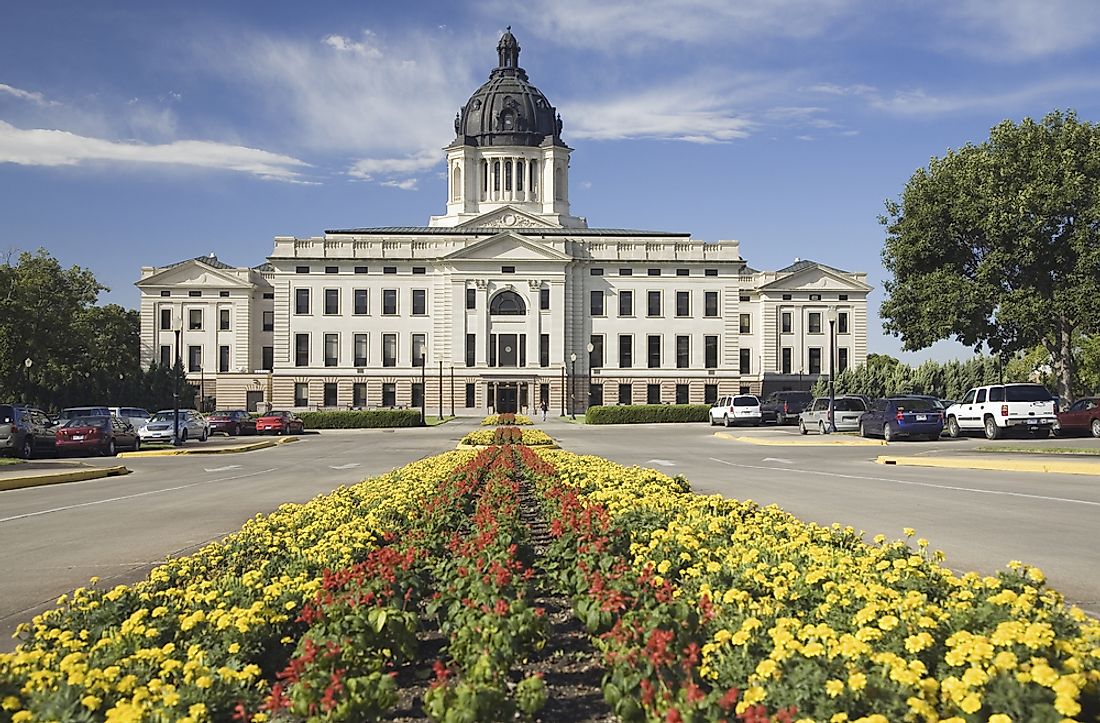What Is the Capital of South Dakota?

The state capital of South Dakota is Pierre. It is one of the least populated state capitals in the United States. It is also where the county seat of Hughes County is located. In 1880s, the city was made the state capital because of its central position. It is located on the East of Missouri River, and the city is also known for Fort Pierre, which serves as a major tourist attraction.
History
In 1743, Louis Joseph de La Verendrye and Francois arrived at the present day Fort Pierre from Quebec on their expedition. They claimed the land for France and buried a metal plate on a hill on their journey. In 1832, Fort Pierre Chouteau was established as a trading post by Pierre Chouteau Jr. who was a fur trader. In 2017 Fort Pierre will be celebrating its bicentennial to mark 200 years of uninterrupted settlement at the confluence of Bad and Missouri Rivers. The city Pierre has been South Dakota’s state capital since the state attained statehood in 1880.
Geography
The city of Pierre covers an area of 13.07 square miles, out of which 13.06 square miles being land and water covers an area of 0.01 square miles. The city of Pierre lies on the eastern part of Missouri River banks and it overlooks its stretch, which is a short distance from Lake Oahe. Lake Oahe is among the largest human-made lakes in the world, and it was created to control floods and to help in irrigation. Presently, the lake is a famous tourist and fishing destination.
Economy
Pierre is a major trading hub in central and South Dakota, and the economy of the city is supported by agriculture, government, and recreational services that are closely linked to the Missouri river. The retail businesses in Pierre cover an area with a radius of about 100 miles, and there are about 100,000 inhabitants within the radius. The nearby Sarpe and Oahe lakes which are a reservoir of river Missouri enable the business community of Pierre to enjoy low electric rates and abundant water supplies. The economy of the city depends mainly on the state government which is the largest employer, and its operations are mostly centered in the city. The biggest private employer in the city is St Mary’s hospital, which employs about 500 workers. Tourism and small business are the primary sources of jobs and income in the city.
Demographics
The population of Pierre stood at 13,856 as of 2016 census. Approximately 47.8% of the population are men while 52.5% are women. 89.2% of the population are high school graduates while 32.5% are college graduates, and 1.7% are attending college. The per capita income in Pierre is $28,801 while the median household income is $53,202. Approximately 11.6% of the population lives below poverty line
Transportation
River Cities Public Transit in Pierre provides public Transit, which is the primary means of transportation. A regional bus service is provided, and the locals have a shared taxi program. Pierre is among the only four state capitals in the US that are not served by an Interstate highway; the other states include Alaska, Delaware, Dover, Juneau, Missouri, and Jefferson. Pierre also is the only state capital in the country not served by any expressways and the closest Interstate highway is Interstate 90, which lies approximately 34 miles south of Pierre.







